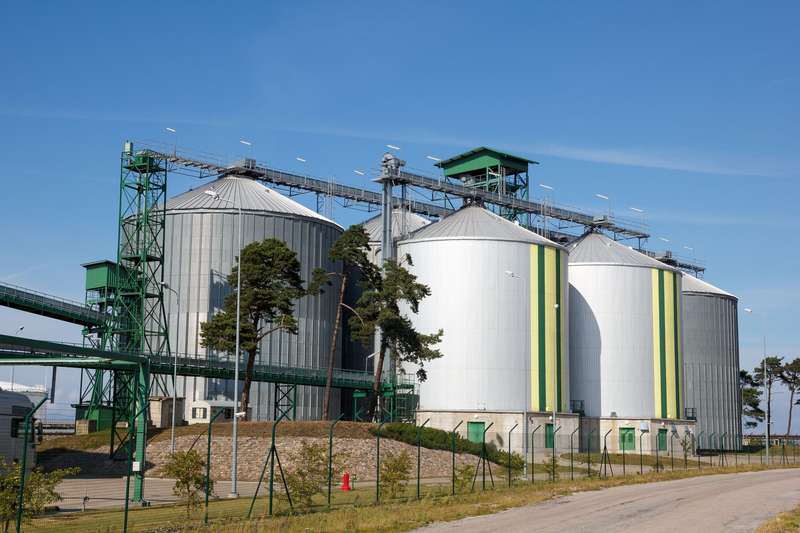Managing Complexity in Biofuels Production with a Laboratory Information Management System
 Biofuels production has changed considerably over the past decade. Basic fermentation has been largely replaced by more complex processes that involve custom-engineered microorganisms that are capable of converting a diverse range of biomasses into fuel. While these new processes are more efficient and can deliver higher yields, they also place added burdens on third-party and onsite labs to manage their infinitely more complex technology and data requirements.
Biofuels production has changed considerably over the past decade. Basic fermentation has been largely replaced by more complex processes that involve custom-engineered microorganisms that are capable of converting a diverse range of biomasses into fuel. While these new processes are more efficient and can deliver higher yields, they also place added burdens on third-party and onsite labs to manage their infinitely more complex technology and data requirements.
Multifaceted challenge of biofuels production
Because today’s biofuels producers use microbes to break down feedstock – versus the basic anaerobic fermentation methods of the past - the industry now has much more in common with biopharmaceutical manufacturing. The use of genetically modified E. coli strains to more efficiently break down cellulosic material is just one example, and this process involves more scientific rigor, especially at production scale. Manufacturers must closely monitor a wide range of environmental variables associated with biomass breakdown: even slight variations in temperature or pH can kill sensitive bacterium, effectively stopping production.
To keep the process running smoothly – and profitably – requires advanced analytical technologies, including gas and ion chromatography, fourier transform infrared (FTIR) spectroscopy and UV-visible spectroscopy. More important, however, is actively managing the data generated by these instruments, and this is the critical role of the laboratory information management system (LIMS). Managing the complexity of next-generation biofuels production requires technology, workflow and data management capabilities that are far more advanced than earlier generations.
Designing smart biofuels labs
Laboratory instrument data are only be as good as the system that manages them. This is why the integration of data from all instruments using a LIMS is so important – if it isn’t available to stakeholders when, where and how they need it, data may as well not exist at all.
The LIMS drives more efficient, productive and profitable manufacturing on multiple levels. First, using advanced algorithms to identify important patterns or aberrations in the incoming instrument data, the system can identify when a process is at risk of moving out of specification. This automated data processing capability is especially important as biofuels manufacturers scale up production. While paper-based analysis could work for small facilities doing basic anaerobic fermentation, the massive volume of data produced during modern biofuels production requires a highly automated, integrated and paperless solution.
Establish your company as a technology leader. For 50 years, the R&D; 100 Awards, widely recognized as the “Oscars of Invention,” have showcased products of technological significance. Learn more.
Automation extends to critical alerts as well. The LIMS can automatically send notifications to staff when critical production data is available or when data show a process is out of specification. This information can be routed to employees anywhere, anytime using email, text message or push notification. This creates a smart biofuels production environment – with LIMS at its center – that can proactively identify and communicate progress or problems to staff and management, reducing downtime and increasing overall process efficiency.
Additional benefits of LIMS
Biofuels producers are subject to several industry specifications and quality control standards including ASTM (ASTM D975 and ASTM D6751) and ISO. As the industry evolves, however, it’s likely that we’ll see even more oversight of biofuel production processes. The use of genetically modified E. coli alone is likely causing many regulatory bodies worldwide to consider new standards for microorganism storage, use and disposal. Because a LIMS stores and manages data from across the entire production process, pre-configured reports showing compliance with any current – or future – specification, regulation or requirement is only a few clicks away.
 The recently released ASTM D7862 standard, “Specification for Butanol for Blending with Gasoline for Use as Automotive Spark-Ignition Engine Fuel,” is just one example. It establishes performance requirements and test methods for water content, acidity, inorganic chloride, solvent-washed gum, sulfur content and total sulfate for any butanol being mixed with gasoline. A LIMS can easily monitor these variables during the production process, and it can export the data for review by regulatory agencies or standards organizations.
The recently released ASTM D7862 standard, “Specification for Butanol for Blending with Gasoline for Use as Automotive Spark-Ignition Engine Fuel,” is just one example. It establishes performance requirements and test methods for water content, acidity, inorganic chloride, solvent-washed gum, sulfur content and total sulfate for any butanol being mixed with gasoline. A LIMS can easily monitor these variables during the production process, and it can export the data for review by regulatory agencies or standards organizations.
Another benefit of the LIMS is its ability to help monitor instrument performance, including maintenance and calibration necessary to ensure data accuracy. While seemingly basic, the critical step in biofuels production can avoid costly batch loss or production slowdown. Using a digital maintenance calendar within the LIMS, staff can be automatically alerted when an instrument is due for maintenance or calibration. Subsequently, the LIMS ensures that maintenance is done properly by providing staff with a digital standard operating procedure (SOP) to maintain or calibrate each instrument.
Conclusion
The biofuels industry is undergoing rapid transformation, and navigating this change will require unprecedented scientific rigor. The use of genetically modified microorganisms is certainly just a step on a continuum of innovation, and new instruments and more complex data requirements are all but assured. For manufacturers to ensure safe, efficient and profitable production, however, they’ll require unprecedented visibility into processes and the agility to adapt as the science advances. In this constantly changing environment, a flexible, extensible LIMS is more than simply a data management system – it’s a platform to manage innovation that can grow with manufacturers as they dramatically scale-up their capacity in the coming decades.





